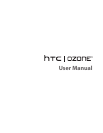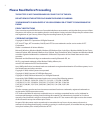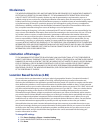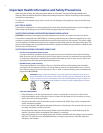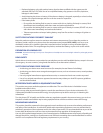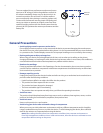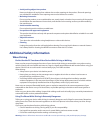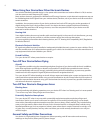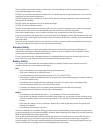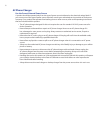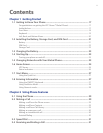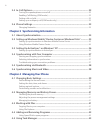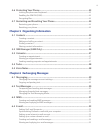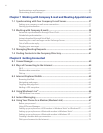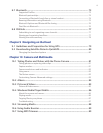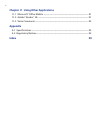8
When Using Your Device Near Other Electronic Devices
Your wireless handheld portable device is a low power radio transmitter and receiver. When it is ON, it receives
and also sends out radio frequency (RF) signals.
Most modern electronic equipment is shielded from RF energy. However, certain electronic equipment may not
be shielded against the RF signals from your wireless device; therefore, use of your device must be restricted in
certain situations.
In addition, the computer portion of your device produces low levels of RF energy due to the generation of
digital timing pulses by its clock oscillator circuits. Your device has been equipped with internal shielding
to minimize stray emissions of RF energy. However, use of the computer functions of your device must be
restricted in certain situations.
Hearing Aids
Some digital wireless phones may interfere with some hearing aids. In the event of such interference, you may
want to consult your service provider, or call the customer service line to discuss alternatives.
For more regulatory information about hearing devices, see “FCC Hearing-Aid Compatibility (HAC) Regulations
for Wireless Devices”.
Electronic Devices in Vehicles
RF signals may affect improperly installed or inadequately shielded electronic systems in motor vehicles. Check
with the manufacturer or its representative regarding your vehicle. You should also consult the manufacturer of
any equipment that has been added to your vehicle.
Posted Facilities
Turn your device OFF where posted notices so require.
Turn Off Your Device Before Flying
Aircraft
FCC regulations prohibit using the transmitting and phone functions of your device while in the air. In addition,
most airline regulations prohibit the on-board use of portable PCs (and all other portable electronic devices
that could potentially emit stray RF energy), particularly during take-offs and landings, to prevent any possible
interference with the reception of signals by airborne electronic navigational devices.
Turn your device OFF before boarding an aircraft. Always request and obtain prior consent and approval of an
authorized airline representative before using your device aboard an aircraft. Always follow the instructions of
the airline representative whenever using your device aboard an aircraft, to prevent any possible interference
with airborne electronic equipment.
Turn Off Your Device in Dangerous Areas
Blasting Areas
To avoid interfering with blasting operations, turn your device OFF when in a “blasting area” or in areas posted
“Turn off two-way radio”. Obey all signs and instructions.
Potentially Explosive Atmospheres
Turn your device OFF when in any area with a potentially explosive atmosphere and obey all signs and
instructions. Sparks in such areas could cause an explosion or fire resulting in bodily injury or even death.
Areas with a potentially explosive atmosphere are often, but not always, clearly marked. They include fueling
areas such as gas stations; below deck on boats; fuel or chemical transfer or storage facilities; vehicles using
liquefied petroleum gas (such as propane or butane); areas where the air contains chemicals or articles, such
as grain, dust, or metal powders; and any other area where you would normally be advised to turn off your
vehicle’s engine.
General Safety and Other Precautions
Your device is a high quality piece of equipment. Before operating, read all instructions and cautionary
markings on the product, battery and AC phone charger.



